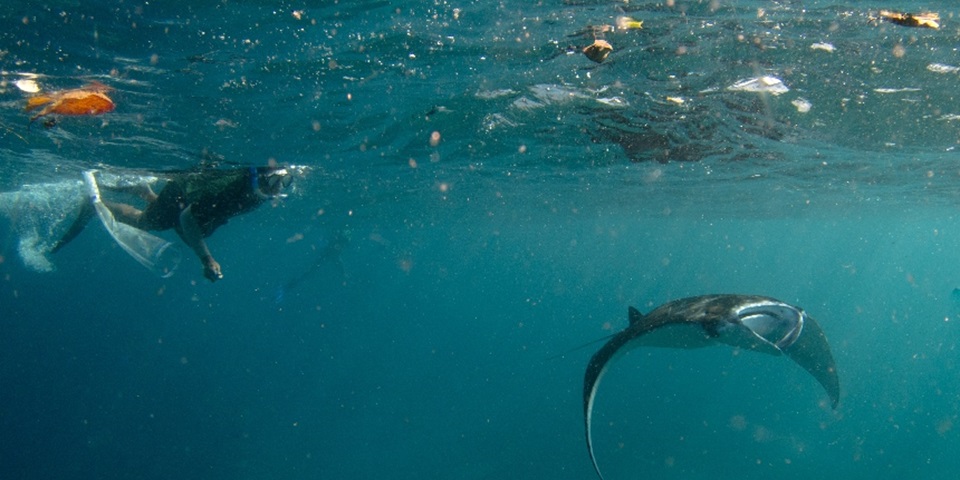News
Microplastics on the menu of manta rays and whale sharks

A study involving Murdoch University has found reef manta rays are consuming more than 60 pieces of plastic every hour in Indonesia, while whale sharks in Java are ingesting about 137 pieces of plastic every 60 minutes.
Marine biologists from the Marine Megafauna Foundation, Murdoch University and Udayana University in Indonesia contributed to the collaborative study which has been published in the journal Frontiers in Marine Science.Manta rays and whale sharks are large filter-feeders and swallow hundreds to thousands of cubic meters of plankton-filled water every day, and with it, tiny plastic pieces from broken down plastic bags and single-use packaging.
The marine biologists estimated the amount of plastic particles in waters off Nusa Penida in Bali, and Komodo National Park and East Java in Indonesia and calculated how many pieces manta rays and whale sharks might be ingesting.
The enormous impact of plastic pollution is evident…researchers used a plankton net to trawl for plastics in the top 50 centimetres of water, and also counted plastic on the surface of the water.
Thin and bendable plastic from single-use bags and wrappers as well as hard fragments were the most common plastics found, while about 80% were small pieces less than 5mm, known as microplastics.
Plastic was also found in manta ray poo and vomit which means that plastics are easily ingested when filter feeding and expose the animals to toxic chemicals and pollutants found in plastics while in their digestive system.
These toxic substances can accumulate over decades and change the hormones that regulate an animal’s metabolism, growth and development, and reproductive functions. Larger pieces of plastic can block nutrient absorption and cause damage to the digestive tract.
Lead author Elitza Germanov, a researcher at the Marine Megafauna Foundation and PhD candidate at Murdoch University, said manta rays and whale sharks can ingest microplastics directly from polluted water or indirectly through the contaminated plankton they feed on.
“With time, plastics break down into smaller pieces called microplastics that large marine filter feeders might accidentally scoop up because they float among their prey” said Ms Germanov.
“Manta rays and whale sharks can ingest microplastics directly from polluted water or indirectly through the contaminated plankton they feed on,” she adds.
Neil Loneragan, Professor of Marine Ecology and Conservation at Murdoch University said it’s tricky to determine how much plastic is ingested by manta rays and whale sharks.
It is difficult to assess how much plastic manta rays and whale sharks actually ingest because conventional methods used to study animal diets, such as stomach analysis, are unsuitable for threatened species like these.”Manta rays and whale sharks are threatened species facing extreme pressures from overfishing. They are often caught accidently in nets or become entangled in fishing lines.
Indonesia is currently ranked as the second worst plastic polluter in the world and many neighbouring countries within the Coral Triangle are among the top 10. This study found that plastic volume was up to 44 times higher during the rainy season.
Dr. I. Gede Hedrawan, a plastics researcher from Bali’s Udayana University and study author, said the seasonal variability in plastic pollution shows what a difference it would make to clean up river beds before the rainy season begins.
“We welcome Bali’s recent ban on single-use plastic bags, straws and take away containers, although the law is yet to reach its full effect and spread to smaller businesses,” he says.
Ms Germanov said with plastic production projected to increase across the world, future research needs to focus on coastal regions where pollution overlaps with the critical feeding and breeding grounds of these ocean giants.
The full name of the study by Elitza Germamov and others is titled: ‘Microplastics on the menu: Plastics pollute Indonesian manta ray and whale shark feeding grounds’.
News
Microplastics on the menu of manta rays and whale sharks
Posted on